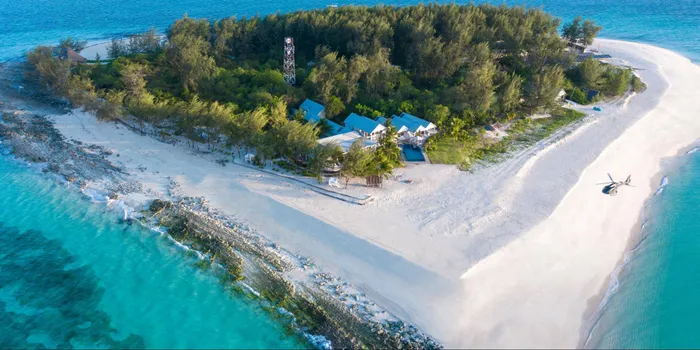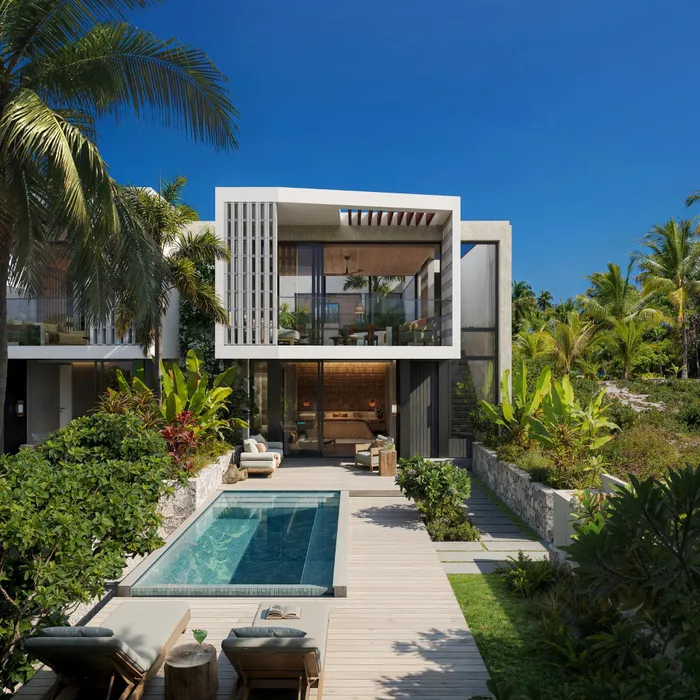
Jumeirah Thanda Island
Image: Supplied
Having long served as a global trade capital, with Asian, European, and continental-African spice traders routinely converging on its shores, the isle is now one of the fastest-growing tourism destinations worldwide. According to the Zanzibar Commission for Tourism, July 2025 arrivals rose 55% year-on-year and 104% compared to July 2023. With more than 106,000 visitors, it was the highest monthly figure ever recorded.
Zanzibar has long been on the radar of savvy international travelers. It boasts a rich cultural heritage and brilliant natural landscapes. PADI Travel has also noted that the isle’s reefs are some of the world’s most abundant, with more than 500 marine species. That said, the recent tourism surge can also be credited to reforms under the current president, as well as substantial airport and port expansion projects.
The trend also mirrors a broader continental dynamic. Deloitte reported in 2024 that Africa’s inbound arrivals are expected to grow at one of the world’s fastest annual rates through 2040. For Zanzibar, this wave translates directly into hospitality growth – and, by extension, rising demand for luxury real estate.
Investors have been tracking the island’s trajectory for years. Within Africa, Zanzibar leads on growth; within the Indian Ocean, it remains dramatically undervalued — a rare luxury market still early in its curve. In 2025, beachfront land averaged just 40% of Mauritian pricing on a per-square-meter basis. Infrastructure upgrades are only now taking shape, meaning Zanzibar still sits at an early stage on the growth curve.

The recently launched Hilltop Oceanview Villas at Sandbank Villas in Zanzibar
Image: Supplied
Hotel supply has been constrained – but global operators are now moving decisively. Minor Hotels has begun construction on the Anantara Zanzibar Resort, a 181-key spa property on the northern coast. Four Seasons will open in 2027, spanning 126 acres with five original-concept restaurants and a wildlife-focused Discovery Centre. Jumeirah, meanwhile, recently re-opened Thanda Island further down the Tanzanian coast – a $50,000-a-night, marine-reserve retreat that set the tone for ultra-luxury in the region.
Institutional capital flowing into hospitality is a powerful signal for real estate — confirming Zanzibar’s attractiveness as an emerging hotspot for high-end development. There are already numerous success stories from the Zanzibari property market.
One example of this surge is Sandbank Villas, on the north-eastern coast. Developed by Johari Developers – with a Tanzanian real estate legacy dating back to the 1990s – the project combines design-led oceanfront residences with resort amenities such as a cliffside pool, seaview spa, and open-air restaurant. Demand has been overwhelming: all 24 of the property’s Oceanview and Beachfront Villas have already been reserved – a milestone that confirms Zanzibar’s new chapter as a luxury property market. To meet appetite, the final phase, the Hilltop Oceanview Villas, launched this month.
Equally notable is the breadth of demand. Buyers at Sandbank Villas have come from across Europe, North America, East Africa, and the Gulf, with a strong contingent from South Africa. Leading brokers such as Roelene Nell of Zanzipalms, who relocated from South Africa to Zanzibar, see this as a turning point.
“In the past two years, interest in Zanzibar real estate has grown rapidly, particularly from South Africans,” Nell notes. “Investors are waking up to what travelers have long known — Zanzibar is a world-class destination, only just hitting its stride.”
As luxury brands and high-net-worth investors converge on Zanzibar, the island faces a pivotal moment. The challenge — and opportunity — lies in turning today’s influx of investment into a long-term model for balanced growth. Done well, it could become the flagship for African luxury development, showing how authenticity and ambition can thrive together.
